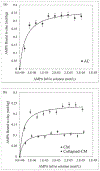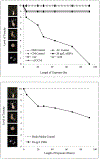Decreased bioavailability of aminomethylphosphonic acid (AMPA) in genetically modified corn with activated carbon or calcium montmorillonite clay inclusion in soil
- PMID: 33279026
- PMCID: PMC7719843
- DOI: 10.1016/j.jes.2020.06.029
Decreased bioavailability of aminomethylphosphonic acid (AMPA) in genetically modified corn with activated carbon or calcium montmorillonite clay inclusion in soil
Abstract
The widespread use of pesticides has resulted in detectable residues throughout the environment, sometimes at concentrations well above regulatory limits. Therefore, the development of safe, effective, field-practical, and economically feasible strategies to mitigate the effects of pesticides is warranted. Glyphosate is an organophosphorus herbicide that is degraded to aminomethylphosphonic acid (AMPA), a toxic and persistent metabolite that can accumulate in soil and sediment and translocate to plants. In this study, we investigated the binding efficacy of activated carbon (AC) and calcium montmorillonite (CM) clay to decrease AMPA bioavailability from soil and AMPA translocation to plants. Adsorption isotherms and thermodynamic studies on AC and CM were conducted and showed tight binding (enthalpy values >-20 kJ/mol) for AMPA with high capacities (0.25 mol/kg and 0.38 mol/kg, respectively), based on derivations from the Langmuir model. A hydra assay was utilized to indicate toxicity of AMPA and the inclusion of 1% AC and CM both resulted in 90% protection of the hydra (**p ≤ 0.01). Further studies in glyphosate-contaminated soil showed that AC and CM significantly reduced AMPA bioavailability by 53% and 44%, respectively. Results in genetically modified (GM) corn showed a conversion of glyphosate to AMPA in roots and sprouts over a 10-day exposure duration. Inclusion of AC and CM reduced AMPA residues in roots and sprouts by 47%-61%. These studies collectively indicate that AC and CM are effective sorbents for AMPA and could be used to reduce AMPA bioavailability from soil and AMPA residues in GM corn plants.
Keywords: AMPA; Activated carbon; Calcium montmorillonite; Glyphosate; Sorbent.
Copyright © 2020. Published by Elsevier B.V.
Figures








References
-
- Battaglin WA, Meyer MT, Kuivila KM, Dietze JE, 2014. Glyphosate and its degradation product AMPA occur frequently and widely in U.S. soils, surface water, groundwater, and precipitation. J. Am. Water Resour. Assoc 50 (2), 275–290. doi:10.1111/jawr.12159. - DOI
-
- Benbrook CM, 2019. How did the US EPA and IARC reach diametrically opposed conclusions on the genotoxicity of glyphosate-based herbicides. Environ. Sci. Eur 31 (1), 2. doi:10.1186/s12302-018-0184-7. - DOI
MeSH terms
Substances
Grants and funding
LinkOut - more resources
Full Text Sources
Other Literature Sources

